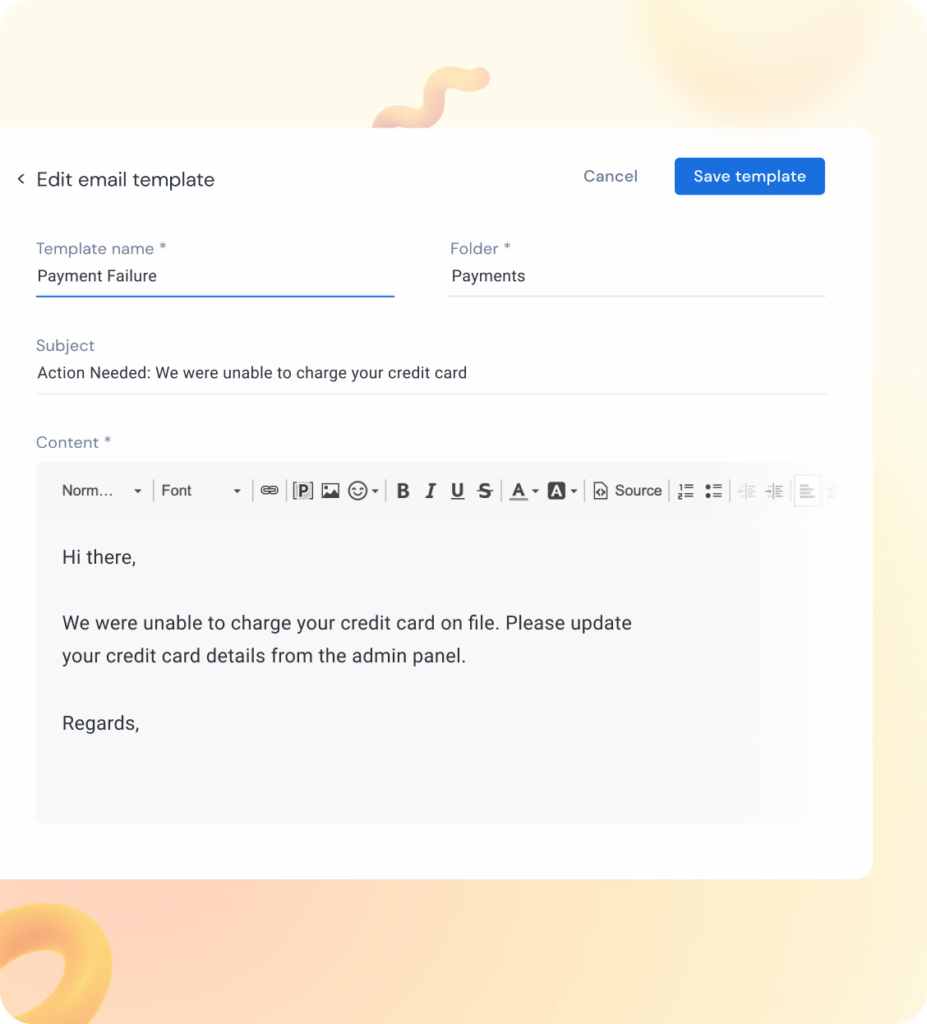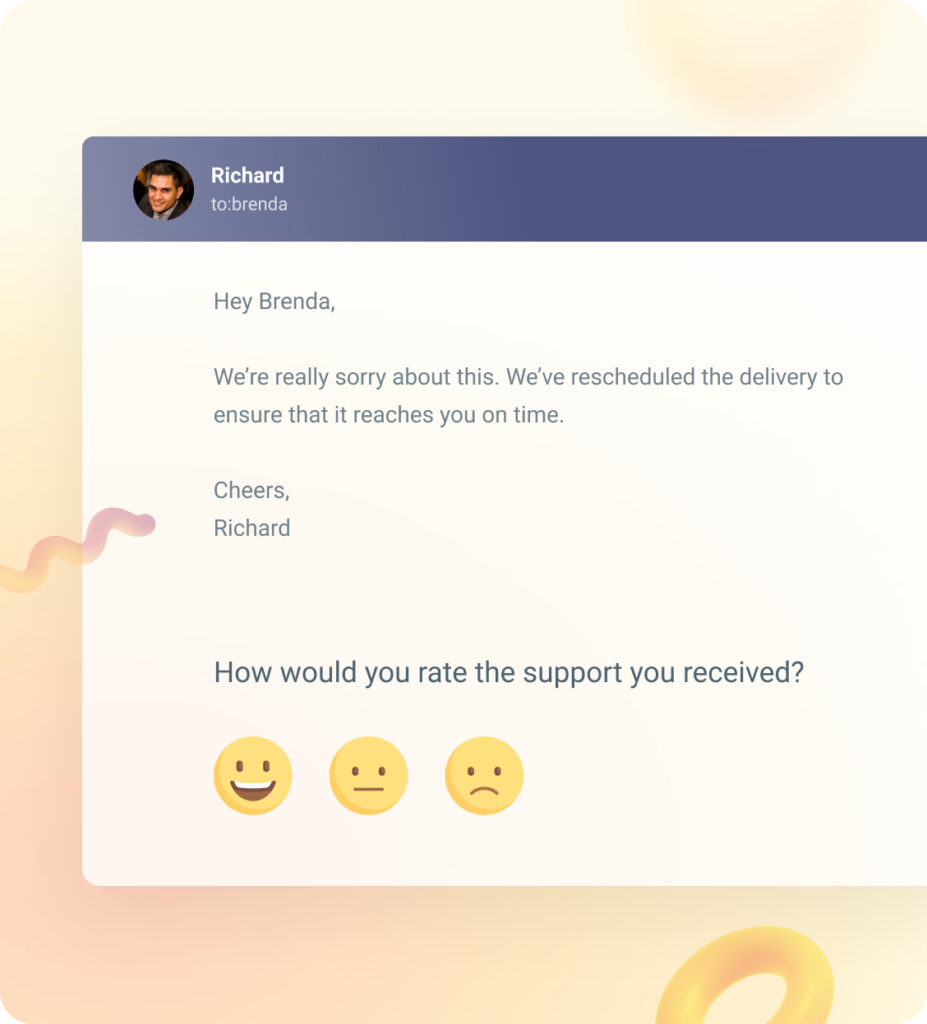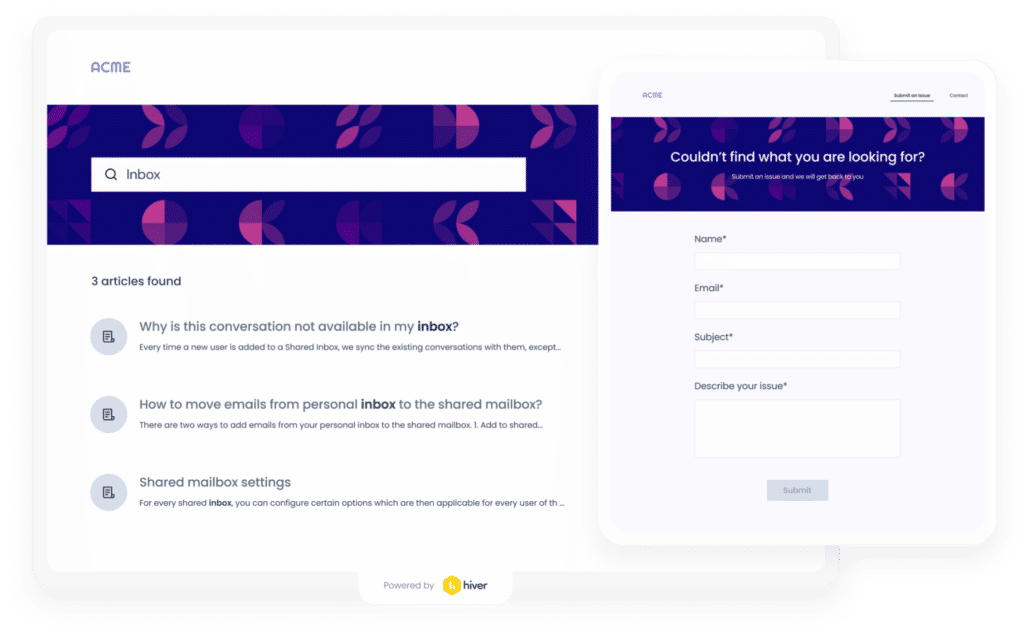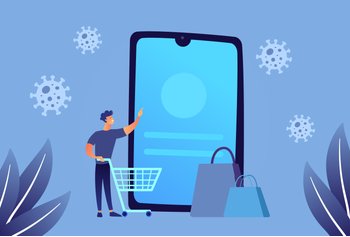10 Strategies to Take Your E-commerce Customer Loyalty to the Next Level

Table of contents
Imagine a small coffee shop that remembers your order every morning. This simple act transforms a routine transaction into a personal experience, compelling you to return day after day. This is the essence of customer loyalty in the e-commerce landscape, where the digital storefront has the power to make each customer feel uniquely valued, just like that local coffee shop.
The stakes in e-commerce customer loyalty are high and ever-growing. According to Fortune Business Insights, the global loyalty management market is projected to expand from $5.57 billion in 2022 to an impressive $24.44 billion by 2029. This rapid growth is a testament to the increasing importance of loyalty in a marketplace crowded with endless choices.
However, securing this loyalty is a nuanced art. While 44% of customers remain loyal to brands that offer great value, the landscape is fickle, with 71% having switched brands at least once in the past year.
This fickleness highlights a key challenge for e-commerce businesses: How do we transform fleeting visits into lasting relationships? In this article, we’ll explore 10 powerful strategies to elevate your e-commerce customer loyalty, turning casual browsers into loyal customers.
What is E-commerce Customer Loyalty?
E-commerce customer loyalty is the bond that forms when customers consistently choose your brand over competitors, not just for the product but for the experience and connection they feel. It’s about creating a positive perception and relationship that transforms first-time buyers into devoted brand ambassadors.
This loyalty is a cornerstone of business success. Just 8% of loyal customers can generate 41% of an e-commerce store’s revenue, highlighting their significance in a brand’s financial and reputational growth. In essence, loyal customers are not just purchasers; they are the storytellers and advocates of your brand, pivotal in sustaining long-term growth.
By integrating effective e-commerce marketing techniques, businesses can enhance customer engagement and foster deeper connections with their audience.
10 strategies to take your e-commerce customer loyalty to the next level
Elevating customer loyalty is an art that requires precision and creativity. Here, we present ten actionable strategies to transform your e-commerce customers into lifelong advocates.
1. Tailored Customer Experiences
Creating personalized experiences in e-commerce is like crafting a bespoke suit; every detail is tailored to fit the individual perfectly. This strategy combats the one-size-fits-all approach, often a pitfall in online shopping. According to a study by Epsilon, 80% of consumers are more likely to make a purchase when brands offer personalized experiences. By making customers feel uniquely understood, personalization fosters a deeper emotional connection, enhancing loyalty.
- Data-Driven Insights: Harness customer data to understand preferences and behaviors with the help of a comprehensive customer service platform like Hiver. Use this to tailor experiences, from product recommendations to personalized emails.
- Targeted Product Suggestions: Employ algorithms to provide product recommendations based on past purchases and browsing habits.
- Customized Communication: Make your marketing messages resonate by personalizing them based on the customer’s history with your brand.
- Celebrate User Content: Encourage and display customer reviews and photos, which not only offer authenticity but also build a sense of community.
2. Engaging Loyalty Programs
Loyalty programs in e-commerce act much like a magnetic field, drawing customers back with the allure of rewards and recognition. These programs effectively address the challenge of customer retention in a market where choices are abundant. According to Accenture, a well-executed loyalty program can increase a brand’s market share by 20% and improve customer profitability by 15%. By offering tangible rewards for repeat business, loyalty programs create an emotional and financial incentive for customers to stay loyal.
- Tiered Reward System: Implement a tiered loyalty program where customers earn different levels of rewards based on their engagement and purchases. Smile.io or Yotpo can be effective tools for this purpose.
- Exclusive Member Benefits: Offer exclusive benefits to loyalty program members, such as early access to sales or special products. Tools like LoyaltyLion or Antavo are great for managing such exclusive offers.
- Personalized Rewards: Tailor rewards based on customer preferences and past purchases, enhancing the sense of personal connection. Software like Zinrelo or ReferralCandy can help customize these rewards.
- Engagement Beyond Purchases: Encourage customers to earn points for actions other than purchases, like writing reviews or engaging in social media, using platforms like Kangaroo Rewards.
3. Exceptional Customer Service
Exceptional customer service is the linchpin of e-commerce loyalty, akin to the reliable crew that keeps a ship smoothly sailing even through stormy seas. In a digital world where direct human interaction is limited, outstanding customer service becomes the human touch that customers crave. The 2017 Microsoft State of Global Customer Service report found that customer service impacts brand choice and loyalty for 96% of consumers worldwide. A strong customer service strategy can turn potential negative experiences into opportunities for loyalty building, ensuring customers feel valued and heard.
- Streamlined Email Management: Use shared inbox to turn emails into actionable tasks with designated owners, ensuring quick and effective resolutions to customer issues.
- Personalized Customer Interactions: Gain insightful context on conversations with customers, enabling personalized responses and a deeper understanding of customer needs with tools like Hiver.
- Efficient Response Templates: Implement Hiver’s email template feature to save canned responses, helping your team provide faster and more consistent replies to common queries.

- Real-time Collaboration on Email Responses: Utilize Hiver’s shared draft feature, allowing team members to collaborate in real time to craft the best responses for your customers, enhancing the quality of your customer service.
4. User Experience Optimization
Optimizing the user experience (UX) in e-commerce is like designing a seamless, intuitive path through a digital forest, guiding customers effortlessly to their desired destination. The best eCommerce websites and apps do this. A well-crafted UX not only solves the problem of potential customer frustration but also enhances the overall shopping experience, leading to increased customer satisfaction and loyalty. For instance, a Forrester Research study found that a well-designed user interface could raise a website’s conversion rate by up to 200%, and a better UX design could yield conversion rates up to 400%. This demonstrates the direct impact of UX on customer loyalty and business success.
- Streamlined Navigation: Ensure your website or app has intuitive navigation, making it easy for customers to find what they’re looking for. Utilize tools like Hotjar or Crazy Egg for heat mapping and user feedback to continually refine the UX.
- Fast Loading Times: Optimize website speed, as slow loading can lead to customer drop-off. Tools like Google PageSpeed Insights can help identify areas for improvement.
- Clear and Concise Information: Provide clear, easily accessible information about your products and policies. Incorporating Hiver’s knowledge base can help ensure that your customer service team provides consistent and accurate information to customers.
5. Quality Product Offerings
Quality product offerings in e-commerce are akin to a chef’s signature dishes — they must be exceptional to entice customers to return. This strategy addresses the challenge of differentiating your products in a crowded online marketplace. High-quality products not only meet customer expectations but also exceed them, fostering trust and loyalty. A Bain & Company study shows that increasing customer retention rates by just 5% increases profits by 25% to 95%, underscoring the impact of product quality on customer loyalty.
- Regular Quality Checks: Implement stringent quality control processes to ensure product consistency and excellence.
- Gather Customer Feedback: Use tools like Hiver to collect customer feedback on product quality regularly and adjust your offerings based on this input.

- Showcase Product Quality: Utilize your website and social media platforms to highlight the quality of your products. Incorporating user-generated content, where customers share their positive experiences with your products, can be effective.
- Responsive Customer Service: Use a customer service platform like Hiver to promptly address any product-related queries or issues, ensuring that customers feel supported and valued.
6. Building a Community
Community building in e-commerce is like creating a welcoming neighborhood where customers feel at home and connected. This strategy addresses the need for social engagement beyond transactions, transforming customers into active community members. A sense of belonging encourages repeated interactions, deepening loyalty. Building a community around your brand can be a powerful way to foster loyalty, as it taps into customers’ desire for connection and shared experiences. A well-executed brand management strategy plays a crucial role in ensuring that the brand’s identity and values are consistently communicated, reinforcing customer trust and engagement over time.
- Social Media Engagement: Actively engage with customers on social media platforms. Create a space for customers to interact, share experiences, and connect with your brand and each other.
- Customer Forums and Groups: Establish forums or groups where customers can discuss your products, share tips, and provide feedback. Platforms like Facebook Groups, Instagram, or Reddit can be ideal for this purpose.
- Regular Community Events: Organize online events, like webinars or live Q&A sessions, to engage with your community. Hiver can be utilized to manage customer queries on multiple channels and feedback effectively during these events.
- Highlight Customer Stories: Share customer stories and testimonials on your website and social media. This not only provides social proof but also builds a narrative around your brand that customers can relate to and be a part of.
7. Regular Communication
Regular communication in e-commerce is like the rhythm of a drumbeat that keeps a tribe in sync. It’s about consistently engaging with your customers through updates, newsletters, and personalized messages. This strategy ensures your brand stays top of mind and builds a narrative that customers feel connected to. Regular, meaningful communication keeps customers informed and engaged, fostering a sense of involvement and loyalty.
- Personalized Email Campaigns: Use email marketing tools like Mailchimp or Constant Contact to send personalized updates, newsletters, and offers. Incorporating Hiver can help manage customer responses to these campaigns effectively.
- Engaging Content Creation: Produce engaging content such as blogs, videos, or podcasts that provide value to your customers and keep them engaged with your brand.
- Social Media Updates: Keep your social media channels active with regular posts, stories, and interactions. Use these platforms to announce new products, share behind-the-scenes content, and build a narrative around your brand, like this slime store on Instagram.
8. Leveraging Customer Feedback
Leveraging customer feedback in e-commerce is akin to listening intently to the whispers of a market, allowing you to adjust your sails to better serve your customers. This strategy involves actively seeking, analyzing, and acting on customer feedback to improve products, services, and overall customer experience. By showing customers that their opinions are valued and acted upon, you build trust and loyalty. It’s an ongoing process of listening and evolving, essential for keeping up with customer needs and preferences.
- Feedback Collection Tools: Use Hiver to efficiently collect customer feedback via CSAT surveys.
- Act on Feedback: Ensure that feedback is not just collected but actively used to make improvements. Communicate these changes back to customers to show that their input is valued and effective.
- Incorporate Feedback into Product Development: Involve customers in the product development process by seeking their input on new features or products.
- Regular Review Analysis: Regularly analyze customer reviews and ratings to identify areas for improvement. Tools like trustpilot can help aggregate and analyze customer reviews.
9. Exclusive Offers and Discounts
Exclusive offers and discounts in e-commerce act like special invitations to a VIP event, making customers feel valued and privileged. This strategy addresses the desire for exclusivity and rewards, effectively driving repeat business and deepening customer loyalty. By offering special deals to returning customers or members of loyalty programs, you not only incentivize repeat purchases but also create a sense of belonging to an exclusive club.
- Time-Limited Offers: Create urgency with time-limited discounts or promotions. Use email marketing tools like Mailchimp to notify customers of these special offers, and manage responses and inquiries efficiently with Hiver.
- Loyalty Program Perks: Offer exclusive discounts or early access to new products for loyalty program members. Hiver can assist your agents in managing the communication and inquiries related to these exclusive offers.
- Personalized Discounts: Send personalized discount codes based on customer shopping behavior or milestones, like birthdays or anniversaries.
- Referral Rewards: Implement a referral program that rewards customers for bringing in new customers. This not only drives new business but also reinforces the loyalty of existing customers.
10. Educational Content
Providing educational content in e-commerce is like offering a map and compass to customers navigating your product landscape. This strategy involves creating informative blogs, tutorials, webinars, and guides that add value beyond the product itself. Educational content positions your brand as a knowledgeable and trustworthy source, fostering customer loyalty by empowering customers with information and expertise.
- Informative Blogging: Develop a blog that provides valuable insights, how-to guides, and product usage tips relevant to your customer base. You can also add these to your knowledge base so that your customers can easily find answers to their questions.

- Tutorial Videos and Webinars: Create video content or host webinars that educate customers about your products or related topics, enhancing their understanding and engagement. You can even use AI text-to-speech technology to convert your existing educational content into videos.
- Interactive Learning Experiences: Offer interactive learning experiences like quizzes or online courses related to your products or industry.
How do we increase e-commerce customer loyalty?
Elevating e-commerce customer loyalty is akin to crafting a unique story for your brand, one where every customer plays a starring role. Through the strategies we’ve journeyed together — from personalizing shopping experiences to championing sustainability — the goal is clear: to transform customers into enthusiastic narrators of your brand’s story.
Envision tools like Hiver as your behind-the-scenes scriptwriters, enhancing your ability to deliver outstanding service and seamless communication. Their role in orchestrating the customer experience shouldn’t be understated, ensuring every interaction is a step towards a stronger, more loyal customer base.
As you implement these strategies, remember the magic lies in making each customer feel like the hero in their shopping journey, with your brand as the trusted ally. If you are looking for the right software to help you take customer experience to the next level, try Hiver free for 7 days and experience the difference.

































